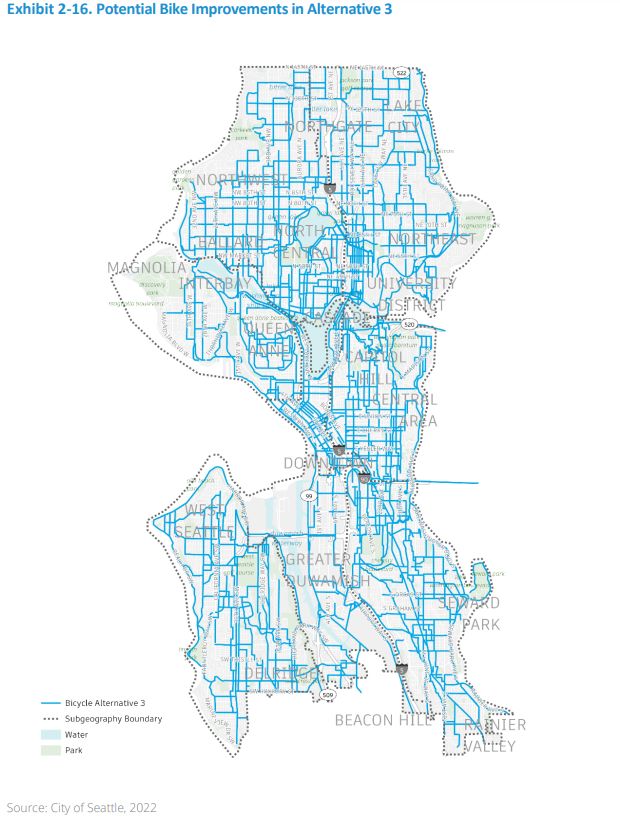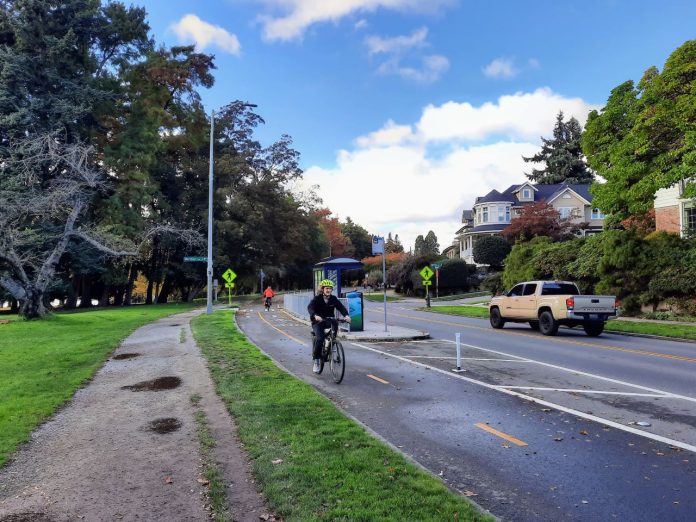
Comment by October 31 to urge the City to improve the Seattle Transportation Plan.
Seattle is mapping out the next two decades of transportation investments as part of its comprehensive plan process, and one transformative option is on the table. The City should not just study that option, but actually choose it in order to get the city on course to meet its climate goals and implement its pledge to eliminate traffic deaths and serious injuries.
Numerous transportation and climate advocacy organizations have urged the Seattle Department of Transportation (SDOT) to take this course of action and integrate those ambitious targets into the Seattle Transportation Plan after the first draft left them blank and “to be determined.” Rapid progress was also the most popular option in public feedback, with 95% of the community favoring it during SDOT’s extensive outreach process.
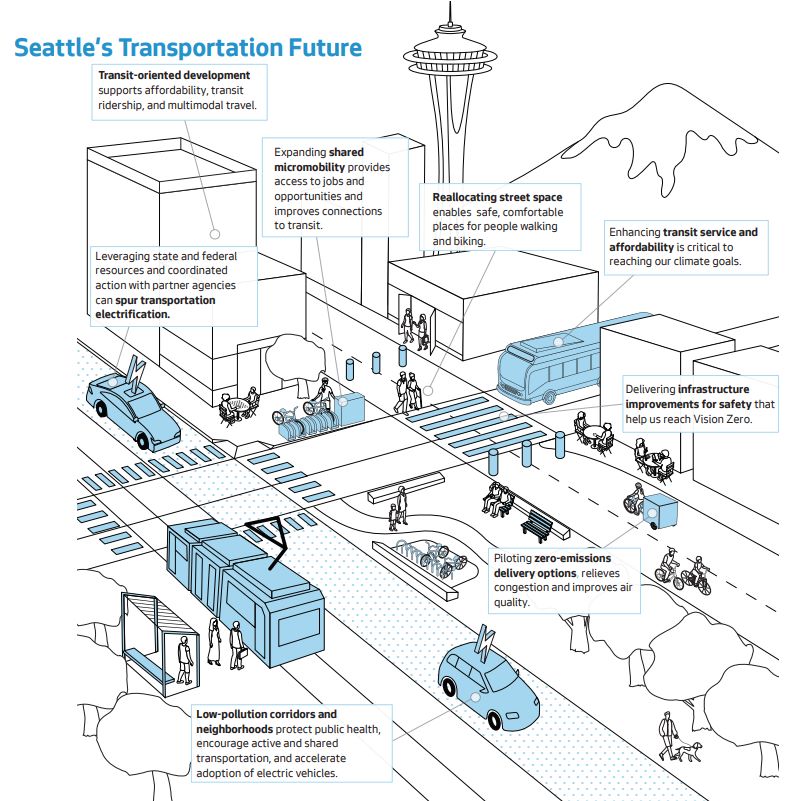
SDOT has extended its comment period on the Draft Environmental Impact Statement (EIS) for the plan until October 31. Don’t miss your chance to weigh in. Comment on the project website.
The department also has a comment period on its recently released Seattle Transportation Plan project list open through November 20.
As The Urbanist detailed earlier this month, the EIS lays out three alternatives. The first is a no-change baseline. Alternative 2 charts “moderate pace” improvements and Alternative 3 is the agency’s “rapid progress” alternative. Over the 20-year planning window, Alternative 3 envisions a major buildout of transportation networks as follows:
- 848 linear miles of sidewalks for the pedestrian network;
- 385 miles of bike facilities to expand the bicycle network;
- 76 miles of additional people streets with whole or partial pedestrianization;
- 123 miles of additional dedicated transit corridors with speed and reliability improvements;
- 19 miles of shared freight- and- bus (FAB) lanes for the freight network.
The City of Seattle plans to study Transportation Alternative 3 as a pairing with the City’s most ambitious land use option: Comprehensive Plan Alternative 5. Together, they would constitute a significant shift toward people living closer to amenities and jobs and having greater access to safe walking, biking, and transit networks, creating more 15-minute neighborhoods where cities can meet their needs close to home without needing a private vehicle.
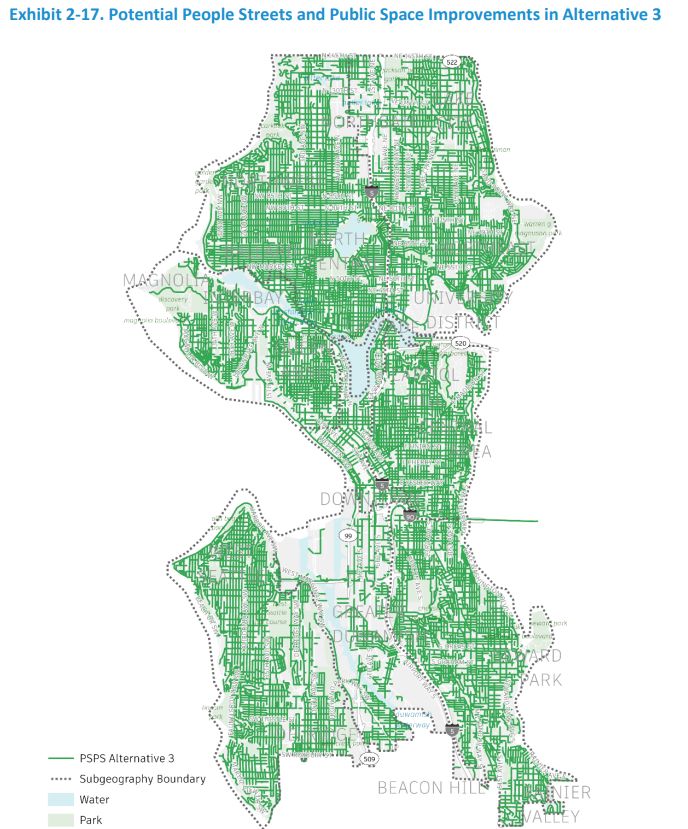

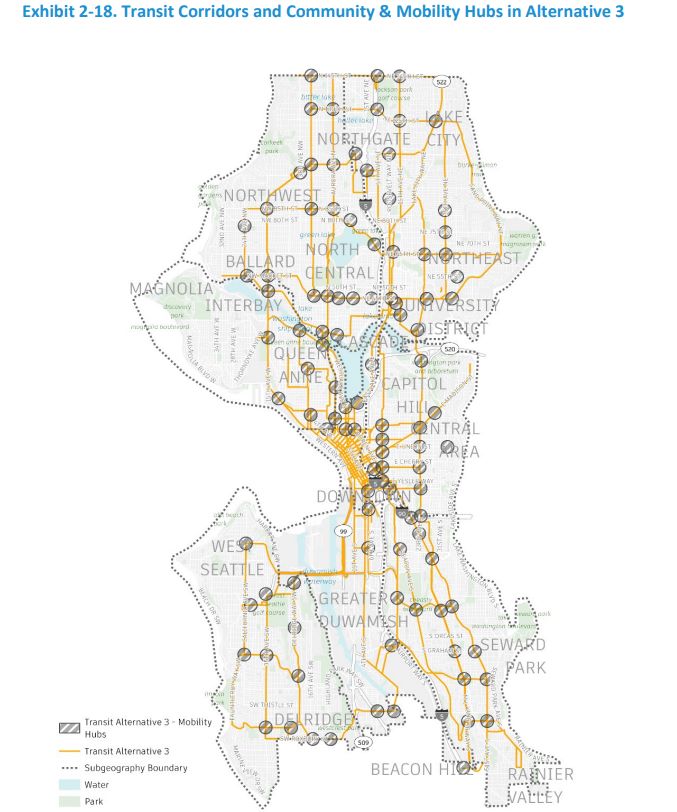
SDOT’s Alternative 3 shoots much higher than Alternative 2, as shown in the SDOT’s chart below. Advocates have urged SDOT to chart how they will get there, with benchmarks along the way.

The Urbanist joined with a group of transportation advocates — including Cascade Bicycle Club, Commute Seattle, Futurewise, Seattle Neighborhood Greenways, and Transportation Choices Coalition — that pushed SDOT to pursue Alternative 3.
“Of the options studied, Alternative 3 would create the most significant expansions to Seattle’s pedestrian, bike, and transit networks,” the groups wrote in the letter. “The city must advance this alternative to get closer to its climate, equity and safety goals, although the EIS does not provide sufficient clarity that even Alt 3 will get the city to the exact goals.”
The groups commended SDOT for its vision for Alternative 3 and urged following through on Alternative 3 to meet climate goals and avert a full-blown environmental catastrophe down the road.
“The STP’s vision is admirable and bold: ‘Seattle is an equitable, vibrant, and diverse city where moving around is safe, fair, and sustainable. All people and businesses can access their daily needs and feel connected to their community.’ As stated in the draft EIS, Alt 3 provides the highest likelihood of reaching our city’s transportation, climate, and equity goals by reducing vehicle miles traveled, greenhouse gas (GHG) emissions, and environmental impacts that harm our air and water quality. Alt 3 responds best to the draft 2024 Comprehensive Plan by providing a range of transportation options close to new housing and jobs. According to climate experts, we need GHG emissions to start decreasing in 2025 and be cut in half by 2030 to avoid the worst outcomes of climate change. Alternatives 1 and 2 do not expand or improve our transportation system with enough urgency to meet these objectives and should not be advanced.”
Alternative 3 appears the only option that holds hope for meeting ambitious transportation mode shift goals for the year 2030 that SDOT laid out in its recent Climate Change Response Framework. Those mode shift goals were not enumerated let alone integrated into the draft Seattle Transportation Plan, which is another improvement the agency can make as it finalizes the plan.
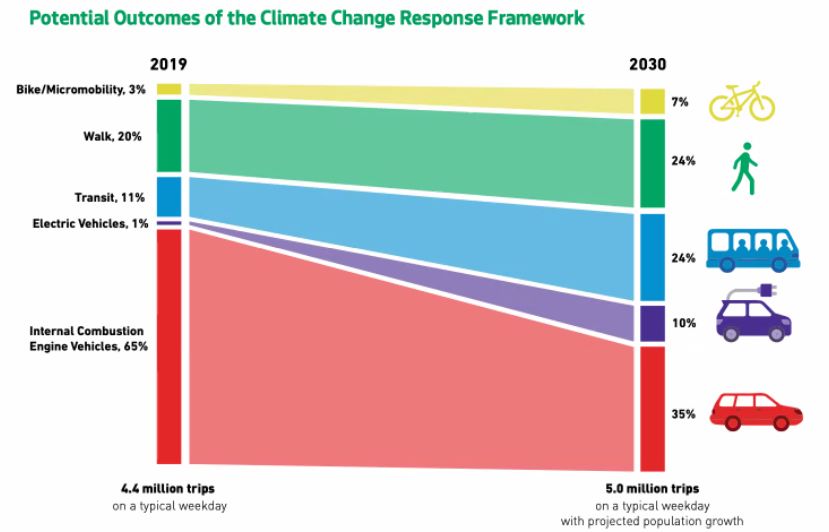
Likewise, the City’s Vision Zero goal to eliminate traffic deaths by 2030 should be integrated into the plan. After some progress since the City of Seattle adopted the Vision Zero pledge in 2015, traffic deaths have started creeping up again and advocates are urging the agency to take more concerted and decisive actions to design and create safer streets. The draft plan missed an opportunity to lay out those concrete steps more clearly.
So, comment on the Seattle Transportation Plan before Halloween to avoid a nightmarish future. Seattle Neighborhood Greenways has a form letter that makes it frightfully easy.
Doug Trumm is publisher of The Urbanist. An Urbanist writer since 2015, he dreams of pedestrian streets, bus lanes, and a mass-timber building spree to end our housing crisis. He graduated from the Evans School of Public Policy and Governance at the University of Washington in 2019. He lives in Seattle's Fremont neighborhood and loves to explore the city by foot and by bike.

